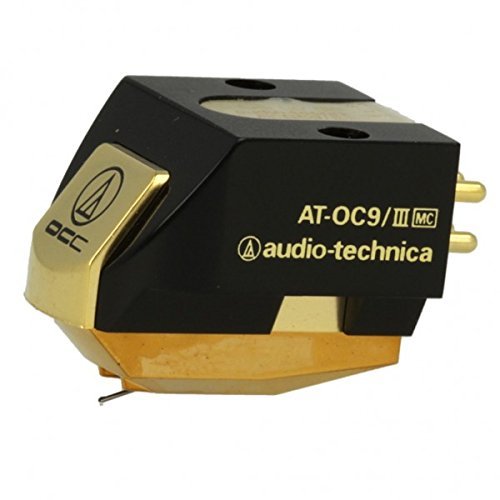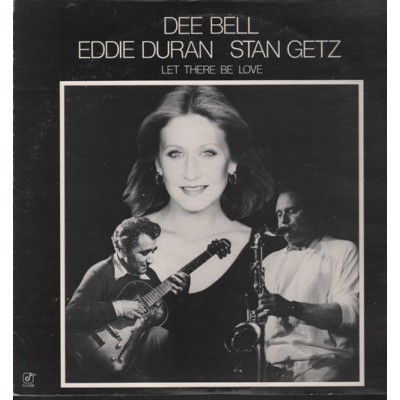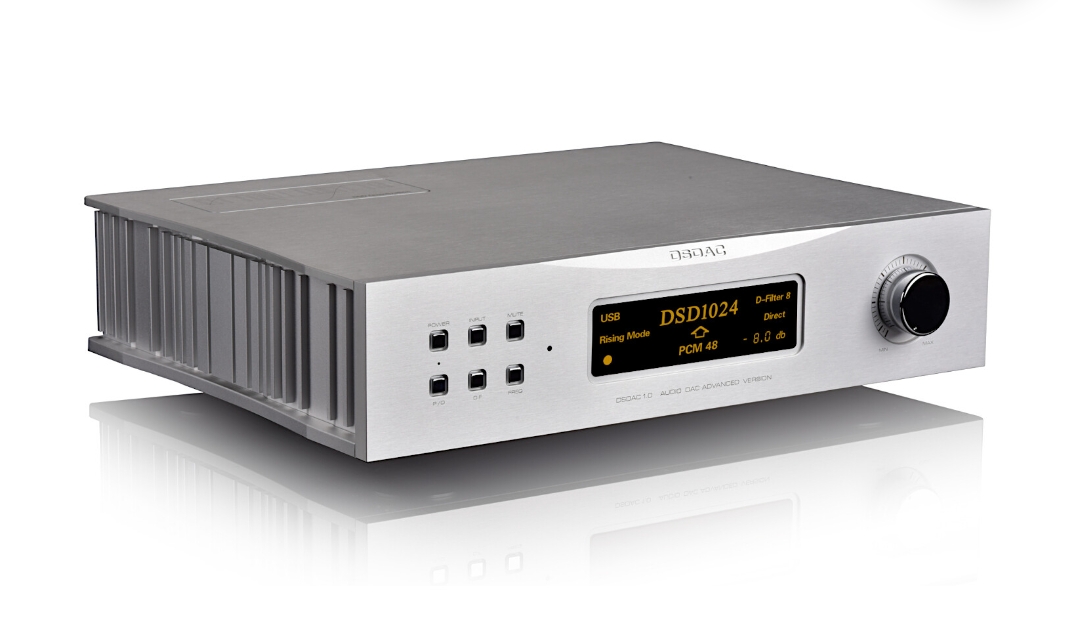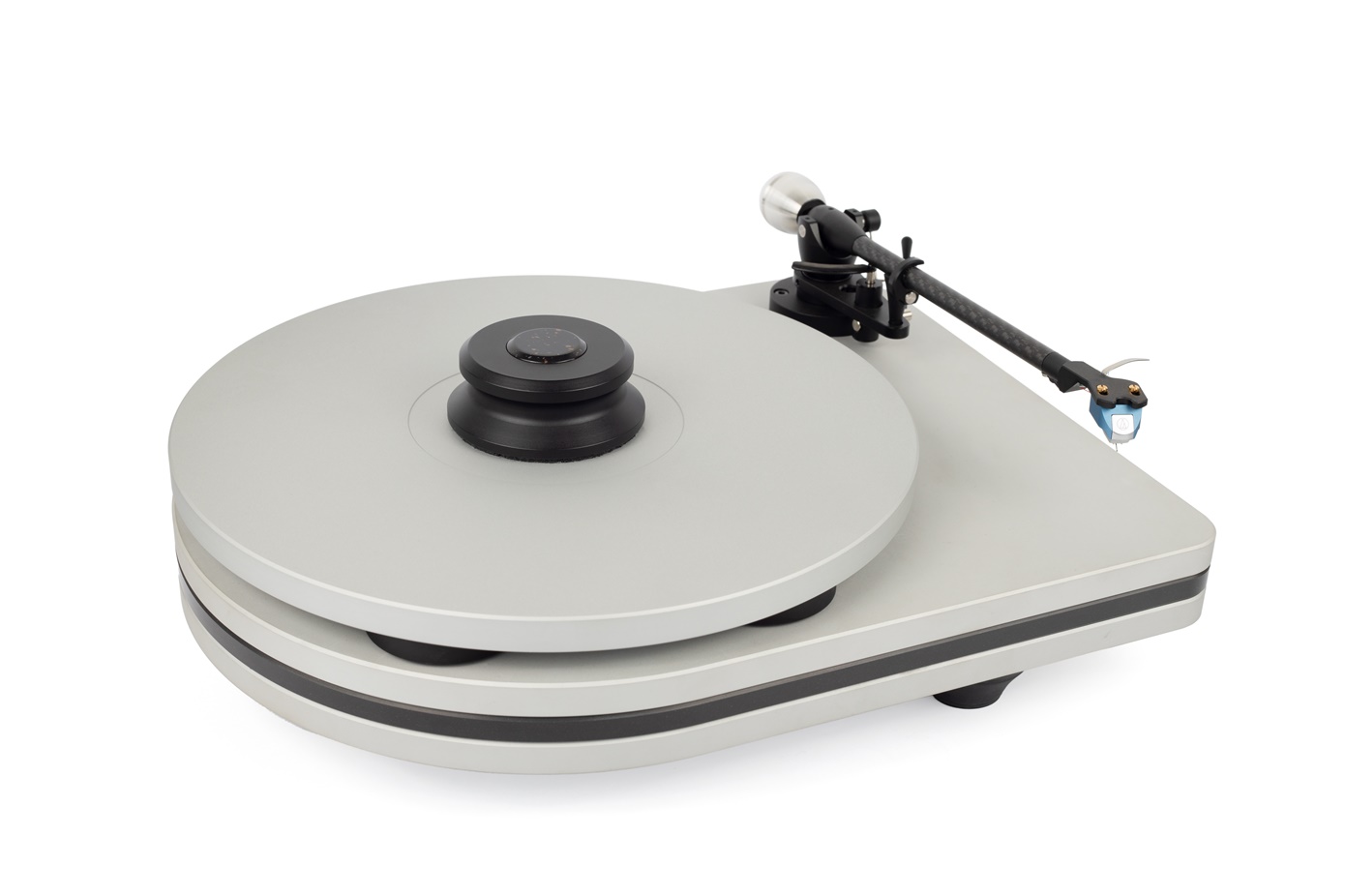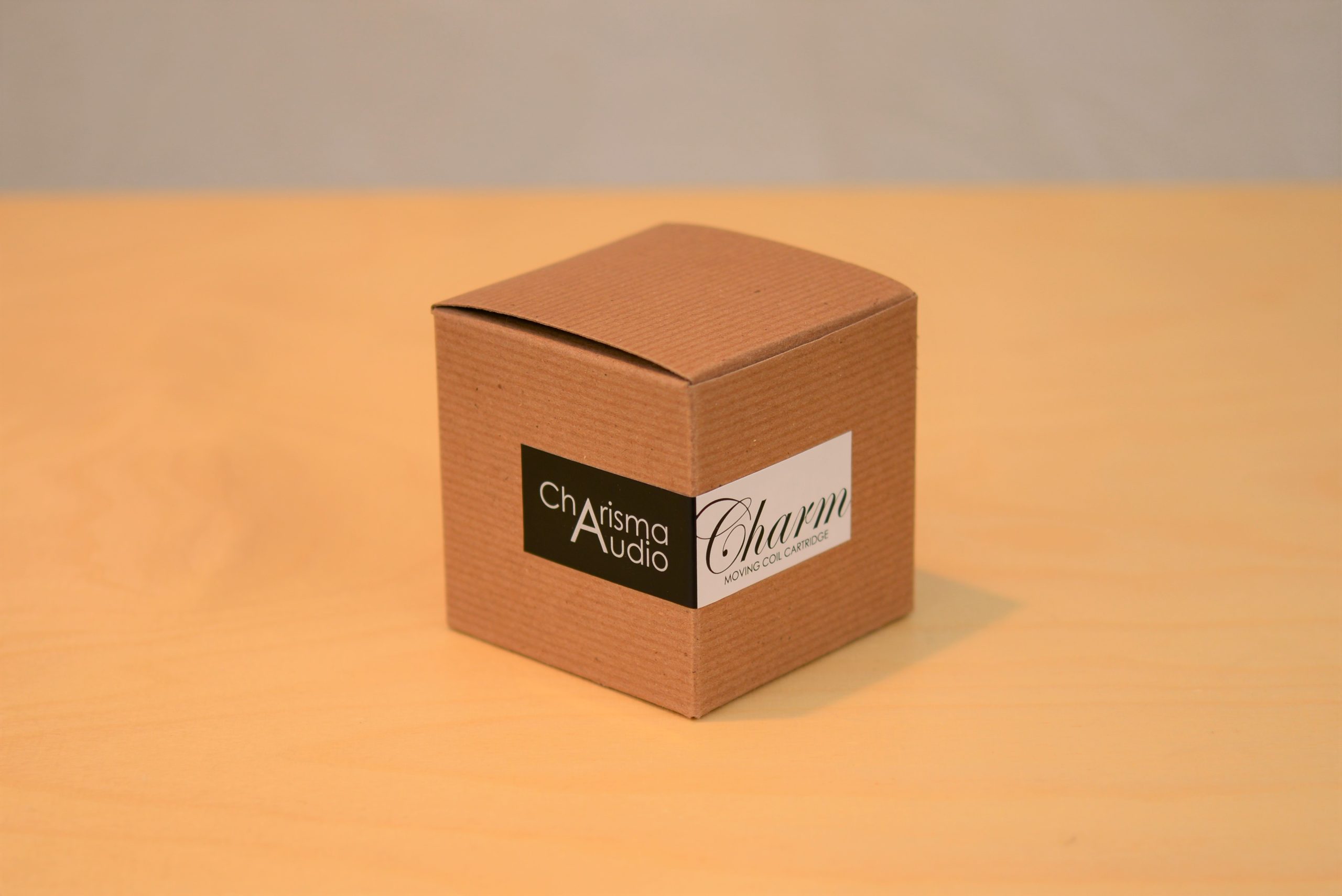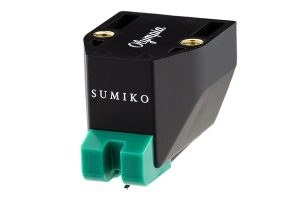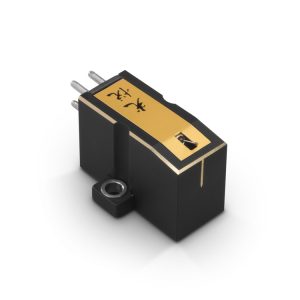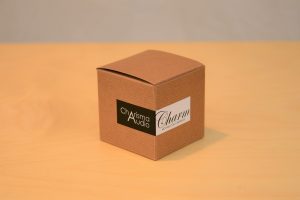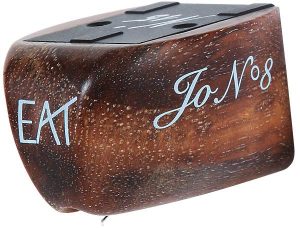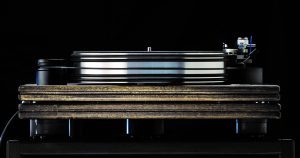In this wonderful hobby of music reproduction, there is perhaps no other discipline as dark and murky as the world of moving coil cartridge manufacturing. Most owners of analog gear view high performance moving coils as something akin to the practice of an arcane art, and the inner workings of a cartridge company are shrouded in an inner sanctum of secrecy. Certainly, there is a body of knowledge that is passed down through the years from those who practice this craft, and those people who have the ability to create these audio gems possess a unique skill set. Yet what does it take to make a high performance cartridge that is within the reach of the average Joe in this hobby? Often we develop a wish list of what we would like to have in a cartridge, and then begin the process of hunting through various offerings to see if it is possible to find one that fits the bill. Typically this list will contain an advanced stylus profile, exotic cantilever material, high quality magnets, a housing made of an intriguing material of some sort, and hopefully, an output level that is high enough to work with our phono stage of choice. Checking all the boxes on this list can conceivably run into several thousand dollars, yet there are affordable alternatives if a person shops carefully. One low-output moving coil cartridge that can meet these requirements is the Audio-Technica OC9 III. This cartridge consistently receives a great deal of scrutiny by hobbyists looking for a solid return for their invested audio dollars.
The AT OC9 III is the latest descendent from the well-respected OC9 family of cartridges; however it is a distinct break from its predecessor, the OC9 II. The previous generation Audio-Technica cartridge has a rich history in the analog world. In the 1990's and 2000's it was one of the favored choices of audiophiles who needed a value priced, high-performance cartridge. The OC9 III continues this tradition, although it does have a different voicing than its older sibling. The MSRP price of the AT OC9 III is $1129, although if you are patient, retailers will place the cartridge on a promotional price from time to time that should be irresistibly attractive to the cost conscious hobbyist.
The working end of this moving coil cartridge is fitted with a solid .26mm diameter boron rod cantilever and a nude square shank line contact stylus. The internal architecture is the classic dual moving coil layout that Audio-Technica employs. Within the core of the OC9 III resides a Neodymium magnet and a permendur yoke assembly. The coils and cartridge pins are produced from PCOCC copper, which is the highest grade for this application. The cartridge body is machined from an aluminum alloy, and combined with a hard resin to minimize mechanical vibration and lower the overall noise floor of the cartridge. The output voltage of the OC9 III is quite reasonable for a low output moving coil design, and checks in at .4mV. Cartridge compliance is 18.0 x 10-6cm/dyne (100Hz), which is ever so slightly high for a moving coil cartridge. However, it does mean it will work well in conjunction with a wide variety of modern tone arms. When I check my wish list for what I want in an affordable moving coil cartridge, the OC9 III certainly has every desirable attribute I could come up with. So the question that must be answered is "How competitive is this cartridge to the mega buck moving coils that are offered by the boutique cartridge companies?"
Since I just finished a review of the Audio-Technica 33EV cartridge, I thought it would be reasonable to install the OC9 III on the same turntable. So I kept my Galibier Audio Serac in the system, and bolted the cartridge up to the Pete Riggle Engineering 12" String Theory tone arm. The phono stage is the Liberty Audio B2B-1, and the load setting I settled on was 300 ohms. Amplification is handled by an Electra Print 300B Custom amplifier and PVA preamplifier. Speakers are a pair of Hawthorne Audio Trio in a custom set of Wood Sage Audio hardwood baffles. Clean AC power is provided by an Audio Magic Mini-Reference power conditioner. All cables are from the ZU Audio Mission series of wire. The tracking weight range of the OC9 III is 1.8 to 2.2 grams, and I ended up preferring 1.9 grams on this arm and table combination.
Let us start this conversation by saying that this is not your Father's Audio-Technica cartridge. Over time, various AT cartridges have gained a reputation for having a high level of detail, a slightly cool tonal balance, and an analytical personality. If this is indeed the case, the OC9 III has shed the traits that formed this stereotype, yet retains the ability to unearth a great deal of information that is imprinted in a record. I hear attributes that are commonly associated with the excellent moving coils that have historically been produced by the boutique manufacturers from Japan. Several of these small manufacturers designed cartridges that may not have been tonally accurate from top to bottom, yet they had a midrange that was intimate, dense in harmonic structure, with a touch of magic that brought the music alive in a way the average cartridge could not emulate. This is what I hear when I listen to the OC9 III, for it is a cartridge that reflects the inner soul of music that makes an emotional connection with the listener. It is evident that the design team for the OC9 III created a cartridge with excellent technical specifications--that certainly cannot be argued. Yet these engineers also understood the process in which a vinyl record, a turntable, and a cartridge can transcend their physical limitations and bring together the artist and listener for a captivating experience. The OC9 III has exquisite texture and detail to the mid-range region, which is clearly evident on "Reminiscing In Tempo" sung by Dee Bell and accompanied by Eddie Duran and Stan Getz. [Let There Be Love; Concord Records CJ-206] Bell's vocals are as smooth as a lake on a calm day, and Getz's saxophone just floats effortlessly through the piece. The piano passages also glide through the back of the song with a jazzy groove that meshes tightly with the other instruments. Everything about this song, actually this album, sounds inherently correct with the OC9 III cartridge, and is a pleasure to listen to.
Another aspect of the OC9 III that I noticed early on is the remarkable energy this cartridge has in the lower registers. The bass response of this cartridge is not only deep and powerful, but it has a level of transparency that is not normally found in cartridges residing at this price point. Affordable moving coil cartridges are often light in terms of overall bass response, or have a fat bottom end that obscures the low level detail that resides in this area of the music. The OC9 III is free from both of these traits. On "Six Blade Knife" by Dire Straits [Dire Straits-Self Titled; Warner Bros Records BSK3266] The bass guitar and drum kit open the song together, and it can be difficult to distinguish the edges between each instrument. This cartridge does a fine job of portraying the energy, tone, and precision of the bass guitar. Yet the kick drum is not obscured by the electric bass, and it maintains the distinctive transparency and texture that defines the instrument. The OC9 III also does a fine job of separating both performers, and yet allowing the music to flow unimpeded, thus showcasing their excellent form. Perspective owners of the OC9 III are in for a real treat if they value top shelf performance in the bass region, as this cartridge certainly sets the bar high for the competition at this price point.
The OC9 III has an enviable one two punch of advanced stylus profile and low tip mass. The boron cantilever and line contact stylus not only extracts a high degree of information from the groove, it is also a combination with excellent tracking capabilities. For instance the opening vocals on "Brown Rice/KamapaChenno" by Shadowfax [Shadowdance; Windham Hill WH-1029] are whispered quickly and have many phrases that force lesser cartridges to mistrack with a nasty sibilance. The plucked strings that are layered over the wooden percussion instruments are neatly separated, and kept in their proper position in the sound stage. Later the band picks up the pace and the dynamic contrasts increase when an electric bass and guitar make themselves known. Without a misstep, the OC9 III handles the increased dynamic load, and the music stays composed in every facet. The saxophone enters with a jazzy hook, but later in the song it starts to belt out some forceful passages as the music crests to a climactic ending. Once again, this cartridge has no issues dealing with the increased dynamic demands of this composition, and is still able to sort out all the fine detail of this complex mix of instruments. No matter what a record throws at the OC9 III, it does an admirable job handing the tracking challenges presented by intense recordings.
When compared to the finest cartridges in my collection, the OC9 III does have a couple of limitations. In terms of tonal balance, this cartridge is slightly shaded to the warm side. The OC9 III burnishes the midrange to a small degree, and this gives an enticing sheen to vocals, strings, and horns. But when an instrument with extended range, such as a piano is played, these deviations from perfectly flat can be noticed. These anomalies are not terribly objectionable, especially given the reasonable price of this cartridge, but it is important to note they do exist. Secondly, I find that the OC9 III does not have as expansive a sound stage as a few of the other cartridges I own. To be fair the ZYX 4D costs at least 4 times what the OC9 III does, and it should offer a higher level of performance for that kind of price difference. In the context of my system, the Audio-Technica is slightly compressed in terms of sound stage width and depth. For instance, on "Blee Blop Blues" by The Manhattan Transfer, [Vocalese; Atlantic 7 81266-1] the music just came out of the speakers in a more compact scale than the ZYX. Now this song has The Manhattan Transfer backed by the Basie Orchestra, so this is a composition on a grand scale. Every other facet of this song sounded wonderful, and the cartridge was a treat to listen to. The heart and soul of the music is certainly there, but it is just not as spacious as it could be. Yet it is important to remember that this is comparison to a top tier cartridge, and that cartridges that reside at the $1000 and lower price points often do not perform as well in this area as the OC9 III does.
The final question I have for the OC9 III, is "Can you make music fun?" Now this is a refined and expressive cartridge, and it sure has the chops for playing jazz, classical, and modern acoustical music. But many people have an eclectic musical palate, and the question needs to be asked if this cartridge can make classic rock and pop music fun to listen to. For this test I pulled out Crosby Stills Nash and Young's definitive album Deja Vu. From the opening passages of "Carry On" it was clearly evident that the OC9 III would find a way to make a compelling rendition of classic rock. Of course the vocals were marvelous, as was the acoustic guitar work. When the song segued into a a psychedelic hue, this cartridge never missed a beat, and just kept that infectious groove that CSNY creates in this song. Now on "Woodstock" the OC9 III may not have the dynamic footwork like the Audio-Technica 33EV does, but it still does a fine job rocking out on a classic song. This cartridge has an acceptable level of drive and attack, and does a nice job handling the scale and intensity of this piece. On the other hand, "Hourglass" by The Squeeze [Babylon and On; A&M Records SP5161] is a noticeably compressed recording, a bit glassy and hard sounding, and undeniably two dimensional in regards to the spatial characteristics of the sound stage. However that smidgen of burnished warmth that the OC9 III has is a boon to this song, as it brings a degree of texture and warmth. Now there is nothing that this cartridge can do for the dynamic compression or the cardboard cutout presentation of the musicians, that is past the abilities of any cartridge to cope with. Yet the voicing of the OC9 III does have the ability to make a typical pop recording listenable. So for a hobbyist looking for a versatile cartridge that can balance demands of excellent recordings and still make flawed ones enjoyable to a degree, well this Audio-Technica cartridge should be acknowledged as a versatile all around performer.
When you sit down and look at the build quality of the Audio-Technica OC9 III cartridge, it is clearly evident that the design team selected excellent materials for this one. It is all here folks: a boron cantilever, nude square shank line contact stylus, Neodymium magnet, PCOCC copper wire coils and pins, milled aluminum body, and carefully selected dampening resin. You could find parts and materials list like this in a multi-thousand dollar cartridge from a boutique cartridge builder. Yet Audio-Technica brought this cartridge to market for a tad more than $1100. This is a hand built cartridge with numerous quality control checks, not some commodity level piece that is pumped out by the thousands of units. When you consider the resources available to an established company such as Audio-Technica, along with the concerted efforts of dedicated designers and engineers, it then becomes easier to understand how an excellent cartridge like this can be offered at a reasonable price. This cartridge family is a cornerstone in the Audio-Technica product line, and has an elusive quality that only the finer moving coil cartridges have. That is the ability to transcend the limitations of the vinyl medium and express the emotional context of the artist and recording. This is a rare trait and is the calling card of the finest Japanese cartridge designers and their wares. The OC9 III has an exquisite texture and tone in the midrange region and does a lovely job with vocals. This cartridge also has some of the best bass reproduction I have ever encountered at this price point. Not only are the lower registers of music forceful and tactile, but there is a transparency and definition of detail that is typically lacking in many other cartridges. If this were the OC9 III only strength, it would still be noticed in the market place for how superb this one trait is. The upper registers are silky smooth and this cartridge has excellent tracking abilities. The advanced stylus profile and low tip mass are definitely responsible for this facet. Now the OC9 III is not the perfect cartridge, nor is it a mythical giant slayer. This cartridge does have limitations; that is to be expected since it is not a top of the line cartridge. Not even in Audio-Technica's line up. For that you would have to find a domestic Japanese offering, such as the ART 7 or ART 9, and the cream of the crop is the 50ANV. The OC9 III is voiced to be slightly warm, and this means it is a forgiving nature to less than perfect recordings. The sound stage generated by this cartridge is not quite as expansive as it could be, yet it is still well defined and tightly focused. When you tally up the ledger of what the Audio-Technica OC9 III brings to the table, it quickly becomes apparent that there is a lot of value being offered to the hobbyist. If you are looking for a quality moving coil cartridge, but don't want to spend the amount of cash it would cost to buy a decent used car, then the OC9 III certainly deserves your consideration as it is a high performance cartridge that is eminently affordable.




